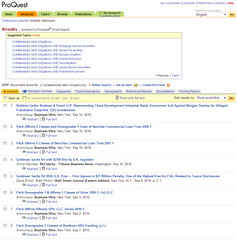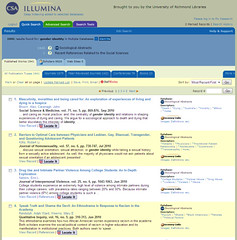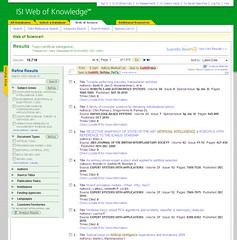Speakers: Pascal Lupien and Randy Oldham
Unsubstantiated assumptions about Millennials cause libraries to make poor choices in providing services and resources. Lupien and Oldham spent some time studying how students actually use the tools we think they use. They used typical survey and focus group methodologies, which make for rather boring presentation recaps, so I won’t mention them.
Study found that only 9% of students used PDAs, and tended to be among older students. 69% of students had cell phones, but only 17% of them have ever used them to browse the Internet. 93% of student have used a chat client, and most have used them for academic purposes several times per week. 50% of users had never used online social network applications for academic group work.
The focus groups found that students preferred email over online social networks for group work. Students are more willing to share the results of their work with friends than with other classmates.
42% of students has never played online games, and men were three times more likely to do so than women. Only 4.1% were involved with online virtual worlds like World of Warcraft and Second Life.
The survey respondents indicated they were more likely to go to the library’s website first rather than Google. The focus groups also confirmed this, in addition to indicating that the library had the best sources of information despite being the most difficult to manage.
Students are reluctant to mix personal and academic computing. The uptake on online social networks for academic use has been slow, but will likely increase, and we have to ask, “is this the best use of our resources and time?” Our priorities need to be more on improving the services we already offer, such as our websites and search tools. “Rather than looking at technologies & trying to find a use for them in our environment, we should determine what our students need & seek solutions to meet those needs.”
Speaker: John Law
Proquest conducted a survey of seven universities across North America and the United Kingdom, involving 60 students. As with Lupien and Oldham’s study, they conducted it anonymously. Observations were conducted in a variety of locations, from the library to dorm rooms. They used a program like web conferencing software to capture the remote sessions.
Law gave an anecdote of a fourth year student who did all the things librarians want students to do when doing research, and when he was asked why, the student gave all the right answers. Then, when he was asked how long he had been doing his research that way, he indicated something like six weeks, after a librarian had come to his class to teach them about using the library’s resources. Library instruction works.
Course instructors are also influential. “My English instructor told me to use JSTOR.”
Brand recognition is fine, but it doesn’t necessarily effect the likelihood that resources will be used more or less.
Students use abstracts to identify relevant articles, even when the full text is available. They’re comfortable navigating in several different search engines, but not as well with library websites in locating relevant resources. Users don’t always understand what the search box is searching (books, articles, etc.), and can find it to be discouraging. A-Z databases page is too unmanageable for most users, particularly when starting their research.
Students are using Google for their research, but mainly for handy look-ups and not as a primary research tool. Those who use Google as a primary research tool do so because they aren’t as concerned with quality or are insufficiently aware of library eresources or have had bad experiences with library eresources.
Librarians, students use Google and Wikipedia the same way you do. (We know you all use those tools, so don’t even try to deny it.)
Students laughed at surveyors when asked how they use online social networks for academic purposes.





